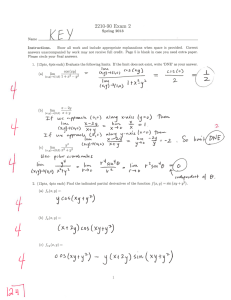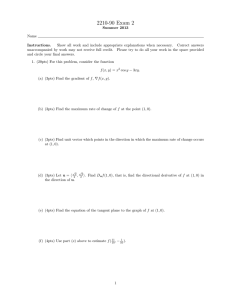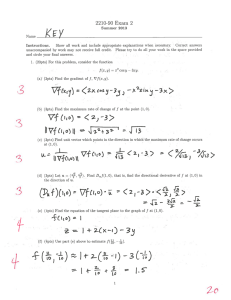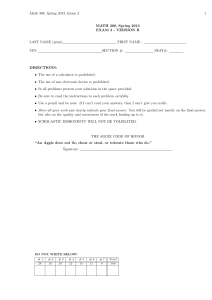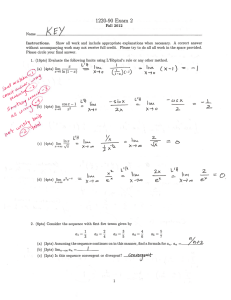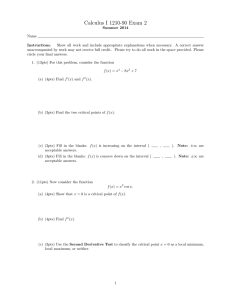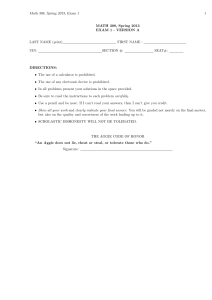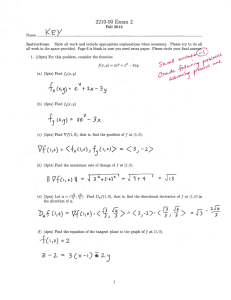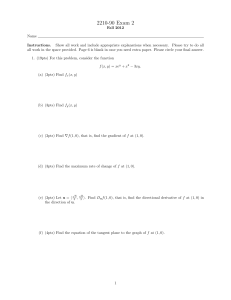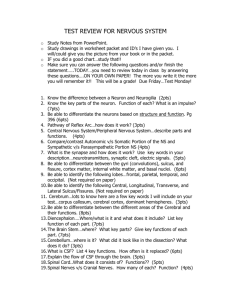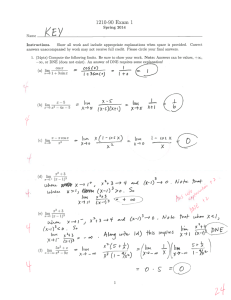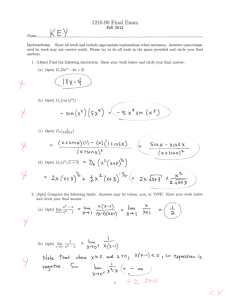2210-90 Exam 2
advertisement
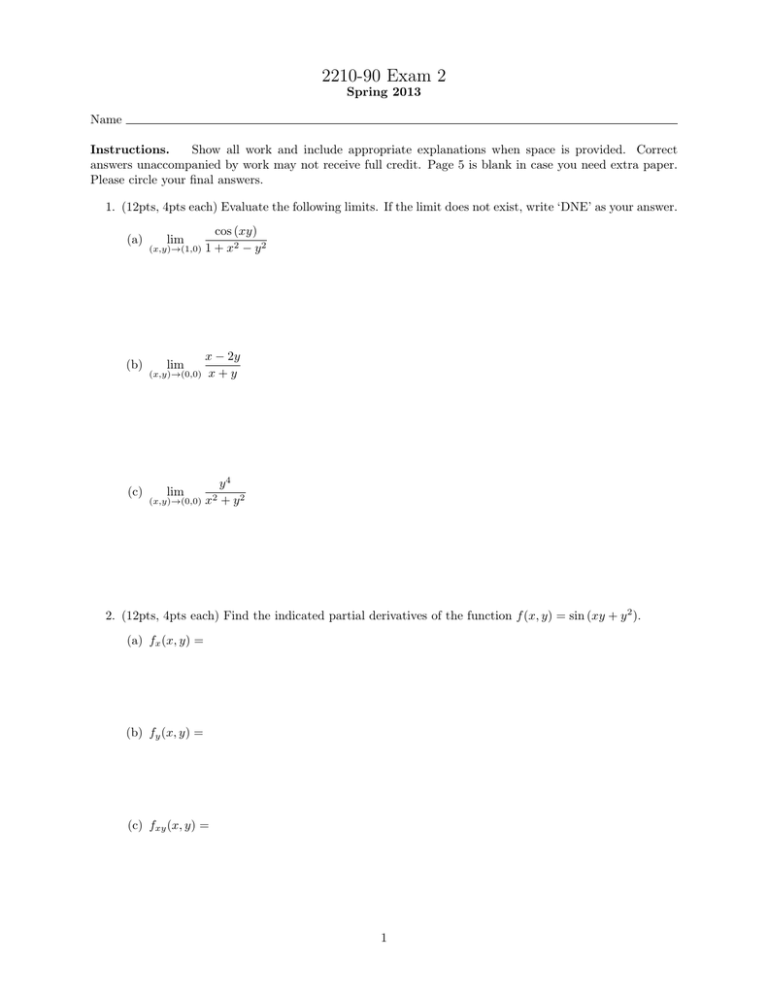
2210-90 Exam 2
Spring 2013
Name
Instructions.
Show all work and include appropriate explanations when space is provided. Correct
answers unaccompanied by work may not receive full credit. Page 5 is blank in case you need extra paper.
Please circle your final answers.
1. (12pts, 4pts each) Evaluate the following limits. If the limit does not exist, write ‘DNE’ as your answer.
(a)
cos (xy)
(x,y)→(1,0) 1 + x2 − y 2
(b)
x − 2y
(x,y)→(0,0) x + y
(c)
lim
lim
lim
(x,y)→(0,0) x2
y4
+ y2
2. (12pts, 4pts each) Find the indicated partial derivatives of the function f (x, y) = sin (xy + y 2 ).
(a) fx (x, y) =
(b) fy (x, y) =
(c) fxy (x, y) =
1
3. (13pts) For this problem, consider the function
f (x, y) = xy 2 + x3 − xy 3 .
(a) (4pts) Find ∇f (1, 1), that is, find the gradient of f at (1, 1).
(b) (3pts) Find the maximum rate of change of f at (1, 1).
√
(c) (3pts) Let u = h 22 ,
the direction of u.
√
2
2 i.
Find Du f (1, 1), that is, find the directional derivative of f at (1, 1) in
(d) (3pts) Find the unit vector that indicates the direction in which f increases the fastest at (1, 1).
4. (12pts) Find the equation for that tangent plane to the ellipse
3x2 + y 2 + 2z 2 = 6
at the point (1, −1, −1).
2
5. (11pts) Consider the function
f (x, y) = x3 + y 2 − 3x + 6y.
(a) (4pts) Find the 2 critical points of f .
(b) (3pts) Find the discriminant, D = fxx fyy − (fxy )2 .
(c) (4pts) Use the discriminant to determine whether each of the critical points found in part (a) is
a local minimum, a local maximum, or a saddle point.
6. (12pts) Use the method of Lagrange multipliers to find the maximum and minimum values of the
function f (x, y) = x2 + y 2 − 2x − 2y on the circle x2 + y 2 = 2.
3
7. (28pts) Find the following double integrals:
Z 3Z 2
(xy − y 2 ) dx dy
(a) (6pts)
0
1
ZZ
(x + 4y) dA, where R is the rectangle R = {(x, y)|0 ≤ x ≤ 2, 0 ≤ y ≤ 1}.
(b) (6pts)
R
ZZ
(c) (8pts)
xy dA, where T is the triangle with vertices (0, 0), (3, 0), and (3, 6).
T
ZZ
xy
dA, where D is the piece of the unit disk in the first quadrant, i.e. the set of
2 + y2
x
D
points (x, y) where x2 + y 2 ≤ 1 and both x and y are greater than or equal to zero.
(d) (8pts)
4
5
